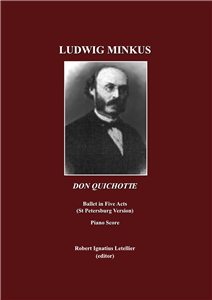This is a head work page, grouping together all editions of this title listed on the site. Browse through ‘All Editions’, Rights information, and Permissions information, to find a rights contact, or a particular edition.
Description
Don Quixote became established in the repertory, and its continued life on the Russian stage bears testimony to the appeal of its exuberance, “the life-asserting and life-loving nature of its dances” (Natalia Roslavleva). Generations of Russian ballet-masters and dancers preserved these dances in essence, and the ballet is still part of the Russian repertory, given today in all Russian and Siberian companies, in the Moscow version of Alexander Gorsky, in three acts and seven or eight scenes.
Petipa’s version of Don Quixote, with its life-affirming music by Minkus, has during the 20th century spread throughout the world, not least because of the work of Rudolf Nureyev who made a film version of the Australian Ballet production in 1971 that became very famous. It co-starred Robert Helpmann and Lucette Aldous, and made world history in being the first ballet to be produced with full film technique, so providing wider scope for imaginative handling of the famous story. Don Quixote has become the standard ballet version of the Cervantes tale, and one of the most popular pieces of the international repertory. Much of its emotional fervour is captured in the celebrated virtuoso Grand Pas de Deux for the wedding of Kitri and Basilio in the last scene. This piece, with a spectrum of feeling enshrined in its rapturous melodies and irresistible rhythmic élan, has assumed a life of its own as a concert piece in countless renditions wherever ballet is performed.
The piano score of the St Petersburg version was published as Don Quichotte (St Petersburg: Theodore Stellowsky, c. 1882). This version is reproduced here.
Author Biography
Rights Information
All Rights Available



